A heritage of saints and scholars
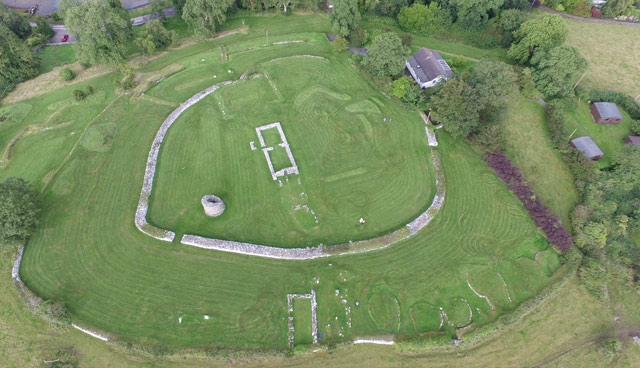
January 1967 saw Regent House Grammar’s vice principal, Ted Griffiths, hold a public meeting to discuss the launch of a new historical society in Newtownards. 52 years later, Niall Coleman meets with the realisation of Griffiths’ ambition, speaking with the Ards Historical Society about heritage, homeland and history in a land of saints and scholars.
The decision was made to establish a society in May 1967, with the initial public meeting drawing such an attendance that Griffiths and his fellow historians moved out of the town hall and into the Queen’s Hall to cope with substantial interest. In the society’s early years, speakers attracted large numbers: amongst the first to address the Ards Historical Society were George Thompson, Director of the Ulster Folk Museum, Dr Otto Simms, Archbishop of Armagh and A.T.Q. Stewart, best-selling academic and author of The Ulster Crisis: Resistance to Home Rule 1912–14 (1967). The society’s proclivity for notable speakers has continued into the present day, with the Society’s 50th anniversary in 2017 celebrated with a lecture from Eamon Phoenix on the United Irishmen’s failed North Down rebellion in 1798.
A cultural mainstay
The Society envisaged by Ted Griffiths has established itself as a cultural mainstay in the borough, with a 13-strong committee continuing to promote the history, people and places of Ards and North Down, along with its folklore, customs, place names and dialects. Meeting in the Londonderry Room of the town hall, Mervyn Bell, vice chairman of the Ards Historical Society, suggests that the choice of location is apt: “To meet in this place, in this particular building, seems appropriate; the building where Griffiths himself proceeded to launch our society, in a room adorned by a portrait of the 7th Marquess of Londonderry, who contributed so much to the history of this area”.
According to the committee, the reasons why Griffiths established the society in the first place should not be forgotten. “Griffiths and others saw the true potential of this area. Whilst it may not be a unique town, it certainly boasts many unique features,” they explain. “It is a medieval town, and it is filled with medieval remains. Secondly, it is a Scottish market town, with the only Scottish market cross in Ireland. A lot of people drive through the town and don’t even realise the cross’s presence at the top of the high street,” they add. Indeed, the hidden treasures of the local area are held to the highest esteem by the society, who have been to the forefront of engagement with local council authorities around preserving the jewels of local heritage.
Such engagements have been numerous, with many stretching back over lengthy periods. One example surrounds that of the Friends’ Meeting House at Kiltonga. With work commencing on the structure in 1796, the building remained in an unfinished state since 1806. “It was the Ards Historical Society who led the initial effort to restore the building. The restoration was overseen by Enterprise Ulster at the time and served as a valuable meeting place for the society in the period that followed,” reflects Mervyn Bell, “and more recently, the society has been instrumental in ensuring that the Dominican Priory and the 17th century market cross went into state care.”
The restoration of the Newtownard’s market cross has been a key priority of the Committee and is symbolic of the complexity of heritage preservation. The structure, built in 1636 and nearly destroyed by commonwealth troops in 1653, remains a key location for heritage tourists across Ireland. However, the present era has seen the market cross steadily lose ground to modern infrastructure: poorly located at a junction of four streets and surrounded by retail space, Sir Hugh Montgomery’s 11-foot tower now hides in plain sight. “The Council have appointed consultants to look at how this market cross might be restored,” explain the committee. “If anyone wants to look at the cross, there is traffic going past them on all sides. One idea was to have a viewing centre across the road where the cross could be observed from a safe distance. However, moving it from its original location could make it lose its context.”
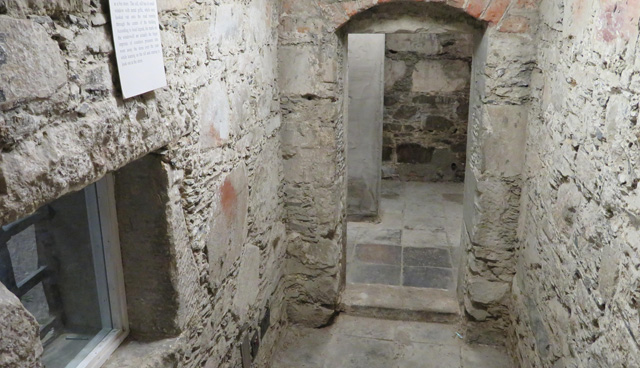
Above: The view from the cells in the town’s market house, used to detain members of the United Irishmen at the time of the failed 1798 Rebellion.
Christian heritage
The society maintains that an understanding of historical context greatly enhances heritage appreciation in North Down. Whilst acknowledging the limitations of the current tourism strategy, the group are keen to highlight the fact that for many across the world, the Ards Peninsula has represented a prime heritage location for many years. The Ards and North Down Christian Heritage Trail is highlighted as a notable example of such an attraction, with the trail incorporating several sites across the borough that have played a key role in the spread of Christianity in Ireland and across Europe.
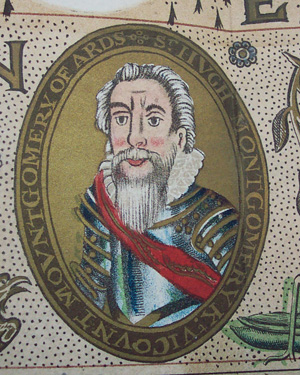
Supported by the Heritage Lottery Fund, the 5km trail continues to attract heritage tourists and the faithful from around the world: “There are interested parties from all over who will want to see this trail for themselves. Only recently we said our goodbyes to Italian pilgrims who stayed in the local tennis pavilion during their visit,” remembers the committee. Beyond the Christian Heritage Trail, the borough places religious landmarks at the core of its cultural offering.
Across Ards and North Down, the rolling landscape is dotted with locations that have been pivotal to the development of Christianity on the island of Ireland, including Grey Abbey, Nendrum and Movilla Abbey. Often overlooked for its historical and religious significance, Movilla Abbey set the scene for the 6th century education of St Colmcille (Columba) by St Finnian. A dispute over the copying of Book of Psalms saw the High King of Tara rule in favour of Finnian, with the famous assertion that “to every cow its calf, to every book its copy” leading to a war between the tribes of Colmcille and Finnian and the subsequent exile of Colmcille to Iona in west Scotland, where Iona Abbey was built.
The society are keen to highlight that these places played a dual role in that they functioned as both places of worship and centres of advanced technology. “Newtownards specialised in manufactured glass, which required significant resources and skills,” argues Bell. “Examples seen at Nendrum Monastery on Mahee Island are particularly notable,” he continues, pointing to the tide mill on the island which dendrochronology dated to 619, making the structure one of the oldest excavated tide mills in the world: “Not only were these people clerics; they were academics. Renewable energy is nothing new in Newtownards!”
Remembering revolt
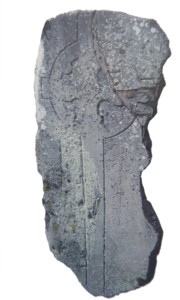
The committee point out that Ards and North Down offers displays of each stage of human settlement in Ireland. “You’re not only talking about the influence of the Ulster Scots and the Plantation of Ulster. You are going beyond that to the early Celtic Church and further beyond to the ‘native’ Irish and the bronze age. However, centuries later, Newtownards saw a failed rebellion by the leadership of the United Irishmen in 1798,” the Society explains. “Many consumers of Irish history don’t know that the rebellion started in Saintfield before spreading to Newtownards. Their initial aim was to attack the Market House with the goal of freeing a leader who was imprisoned there. The rebels were repelled by a garrison of York Fencibles, who forced the retreat of the United Irishmen to Conligg, where the insurgents hope to gather the support of members in Bangor.”
The United Irishmen’s call to arms was successful, with the insurgents returning to the town with reinforcements. They arrived at a town deserted by its military, who had been ordered back to Belfast to regroup. This provided them with the opportunity to seize the town in an event now known as Pike Sunday, when the group formed a Committee of Public Safety and declared an Irish Republic in the town square. The Battle of Ballynahinch was soon to follow, leading to the demise of the rebellion.
Many years later, the events of 1798 continue to reverberate across Ards and North Down. The society argue that the memory of the events must be preserved as part of the area’s wealth of precious heritage. Many of the rebels were tried in the town hall and summarily executed. “Perhaps the most notable of these executions is that of the Reverend James Porter, who was hung outside of his own church,” notes Bell. Indeed, a series of publications have sought to discuss the life and death of the dissenting minister, whose resting place lies at Grey Abbey in the heart of the Ards Peninsula.
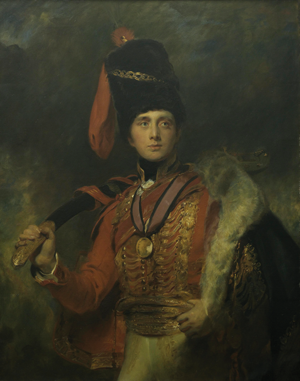
A place of potential
The committee places the preservation and promotion of heritage for future generations as a core aspiration for the future. Committee member Aubrey Fee spent some time overseas before returning to Newtownards: “As an observer coming back to Newtownards, so much of the town has been levelled and built over. There are buildings of architectural significance that are now falling to bits,” states Fee. “However, there is a goldmine here that must be dug out to attract heritage tourists. There isn’t enough being done, and we must promote a greater awareness in the history of the area
“There are a lot of tourists coming into the area, with many visiting the town for the shopping experience. However, a lot of people use day trips for a different kind of experience where they can visit sites and monuments. However, these are sites that must be explained to visitors. When they are explained, they truly come to life,” he adds.
Promotion and preservation offer only a limited contribution to the field of heritage tourism, according to the society. “The attitude that the study of history and heritage is pointless is very wrong. History education is critical; it gives you a sense of belonging and debunks the myths that we uphold about how we have come to be the way we are today. This area is a awash with history. Ards and North Down needs a centre for education and heritage tourism. There is a wealth of opportunity here that must be capitalised on.
“If people can study history and appreciate its context, we can ultimately develop a better standing of the world in which we live today. To ignore history, after all, is to be unfulfilled.”





